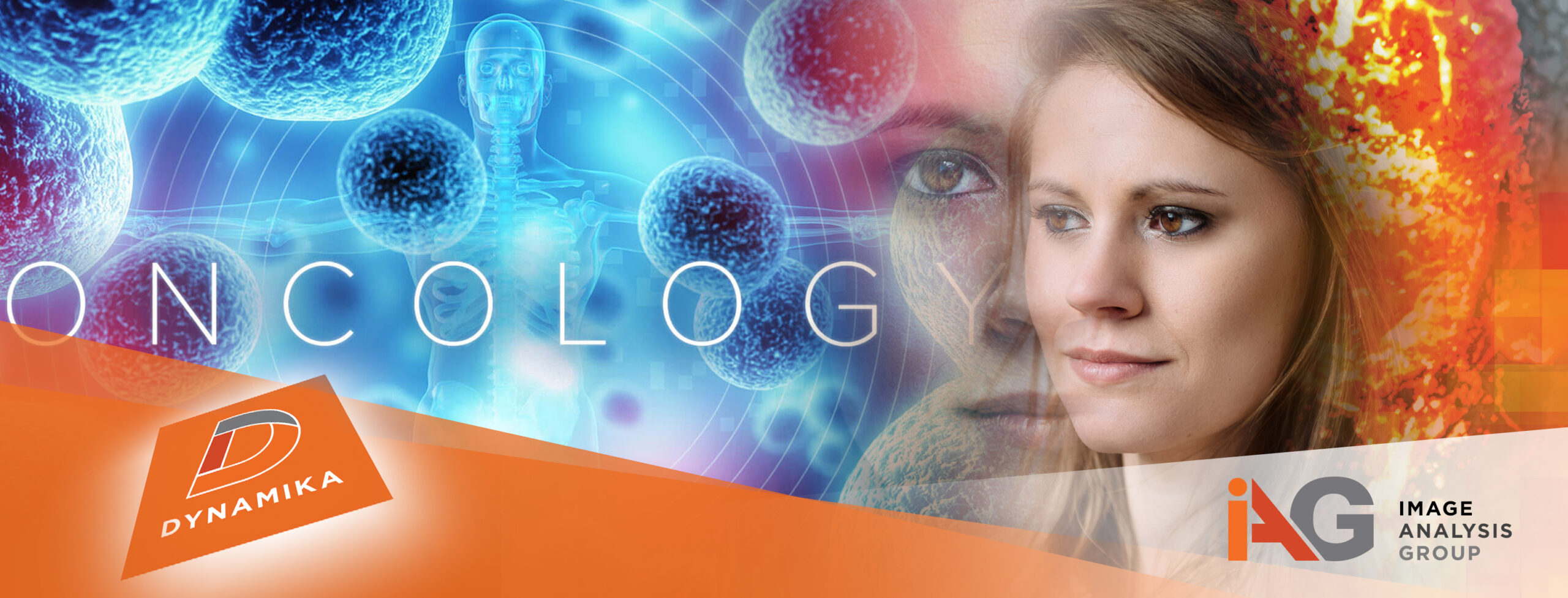

The Promise of Precision Oncology
To succeed, imaging is doubtless the cornerstone of developing drugs. The future is precision oncology, where we utilize Artificial Intelligence (AI) as a modern standard of care in studying and treating glioblastoma multiforme (GBM).
Hide grade glioblastoma is the most common neuro cancer in adults and notoriously difficult to study. The accepted therapy is surgery with radiation and chemotherapy, however, none of the chemo drugs are major breakthroughs, despite numerous clinical trials.
To succeed in developing new treatments, we must rely on evidence provided by data and analytics to understand the patient response.
Dr. Sotirios Bisdas, IAG’s Head of Neuro-Oncology and Neurology Clinical Research speaks in the podcast on glioma surveillance imaging. His recently published paper ‘Glioma surveillance imaging: current strategies, shortcomings, challenges, and outlook’ gives an overview of imaging modalities and techniques which can take GBM drug development to the next level.
Dr. Bisdas explains some of the technology that must be used to best image glioblastoma.
For example, in MR perfusion, gadolinium captures vascular perfusion and shows what is happening in the underlying tissue – whether vessels formed by the tumor contribute to its existence, development, and further growth. Vasogenesis is what turns tumors into the malignant stage.
MR perfusion allows for more specific needle biopsies. We can monitor tumor evolution, differentiate pseudoprogression, blood flow, and blood vessel leakiness – it’s a much more specific surveillance protocol.
It’s a new technique and requires the right platform, like IAG’s DYNAMIKA, to process and analyze the images so that they could be interpreted by radiology experts.
Diffusion-weighted imaging (DWI) captures tumor growth by showing higher tumor cell density and loss of normal tissue architecture.
It provides extensive data that supports using DWI to monitor tumor response. It must be a core part of any GBM surveillance, because it differentiates treatment-related changes and tumor growth. At IAG, we build imaging protocols to make the most from this information in early phase neuro-oncology studies.
Immunoassay PET is historically a great way to follow GBM. fPET is severely limited because of the broadly high glucose uptake in neural tissue. Immunoassay PET is useful to differentiate local relaxed GBM vs radiation changes.
Another example of advanced imaging modality is MR spectroscopy (MRS). It allows us to understand the intimate metabolic properties of a tumor. The method focuses on four to five metabolites that the tumor produces and releases. If there is a detected increase in choline, for example, then we know the tumor is growing/recurring and not responding to chemo. Creatine is another energy metabolite that MR spectroscopy can follow. It’s a direct measurement in a noninvasive way. MRS is the only imaging technique that can diagnose without being invasive.
Finally, chemical saturation exchange transfer (CEST) is a novel MRI contrast mechanism that is better for molecular studies. CEST measures the pH surrounding the tumor cell in six to seven minutes. If the pH is reduced, then the MRI will show a lower signal on the scan. It’s highly accurate but so new that few know about it. Very few companies have the software to analyze the images for this parameter.
All of these modalities incorporate information from different MRIs in a tiered manner, with combined perfusion and diffusion.
At IAG, our goal is to accelerate novel drug development by using the right analytical tools and modern trial infrastructure. Using our artificial intelligence platform DYNAMIKA, we can utilize all of the aforementioned MRI techniques to capture and utilize the promise of precision oncology.
Full podcast: here
Full paper: here
About:
Dr Sotirios Bisdas, Consultant Neuroradiologist and MRI and Clinical Lead at the National Hospital for Neurology in London, Associate Professor in Neuroradiology at the Institute of Neurology, University College London, and Professor of Radiology and Neuroradiology at the University of Tübingen, Germany. He is an expert and a distinguished PI in many international clinical studies, which rely on the use of cutting-edge methodologies and advanced imaging in assessing efficacy of novel treatments for brain tumours and other neurological conditions. He co-authored 130 peer-reviewed publications, 7 book chapters related to advanced MRI in neurological and oncological diseases. He is actively involved in designing and publishing guidelines for the use of perfusion imaging in Oncology.
About Image Analysis Group (IAG)
IAG, Image Analysis Group is a unique partner to life sciences companies. IAG leverages expertise in medical imaging and the power of Dynamika™ – our proprietary cloud-based platform, to de-risk clinical development and deliver lifesaving therapies into the hands of patients much sooner. IAG provides early drug efficacy assessments, smart patient recruitment and predictive analysis of advanced treatment manifestations, thus lowering investment risk and accelerating study outcomes. IAG bio-partnering takes a broader view on asset development bringing R&D solutions, operational breadth, radiological expertise via risk-sharing financing and partnering models.
Learn more: ia-grp.com
Reach out: imaging.experts@ia-grp.com
Follow the Company: Linkedin
